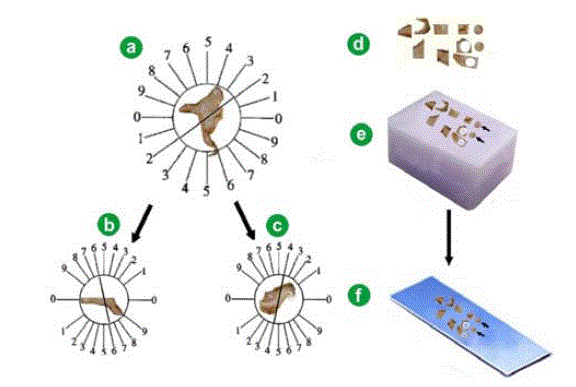
 |
| Figure 1. Orientator method to obtain isotropic uniform random (IUR) sections. a. The pancreas was placed at the center of a circle with equal divisions. A random number was selected and the tissue was sectioned (here 2). Each part of the sectioned tissue was placed on a second circle with non-equal divisions. b. Another random number was selected (here 6) and the tissue was sectioned into slabs. c. Another part was vertically placed on the same circle and sectioned into slabs in a new direction (here 4). d. All the slabs were sampled. Using a trocar, two circular pieces (about 1 mm diameter) were punched randomly from pancreas IUR surfaces of the slabs. e. All the slabs and the circular pieces were embedded in the same block of paraffin (the arrows). f. After staining of the sections, the area of the circular pieces was measured again. |